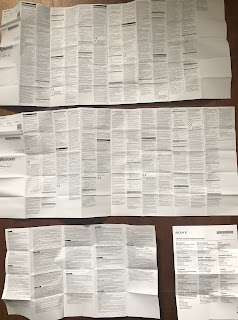My last post brings to mind a piece in Punch magazine about an amazing new piece of technology that allowed instant access to information. You could go straight to the part you want, or start at the beginning and work through. It could be easily stored and the information was permanently recorded, etc, etc.
It was called the Body Of Organised Knowledge, or by its acronym BOOK.
Ironically (or perhaps not) I couldn't find reference to this on the internet, so forgive me if I have forgotten the title or the publication... but I don't think I've made it up.
.jpeg)


